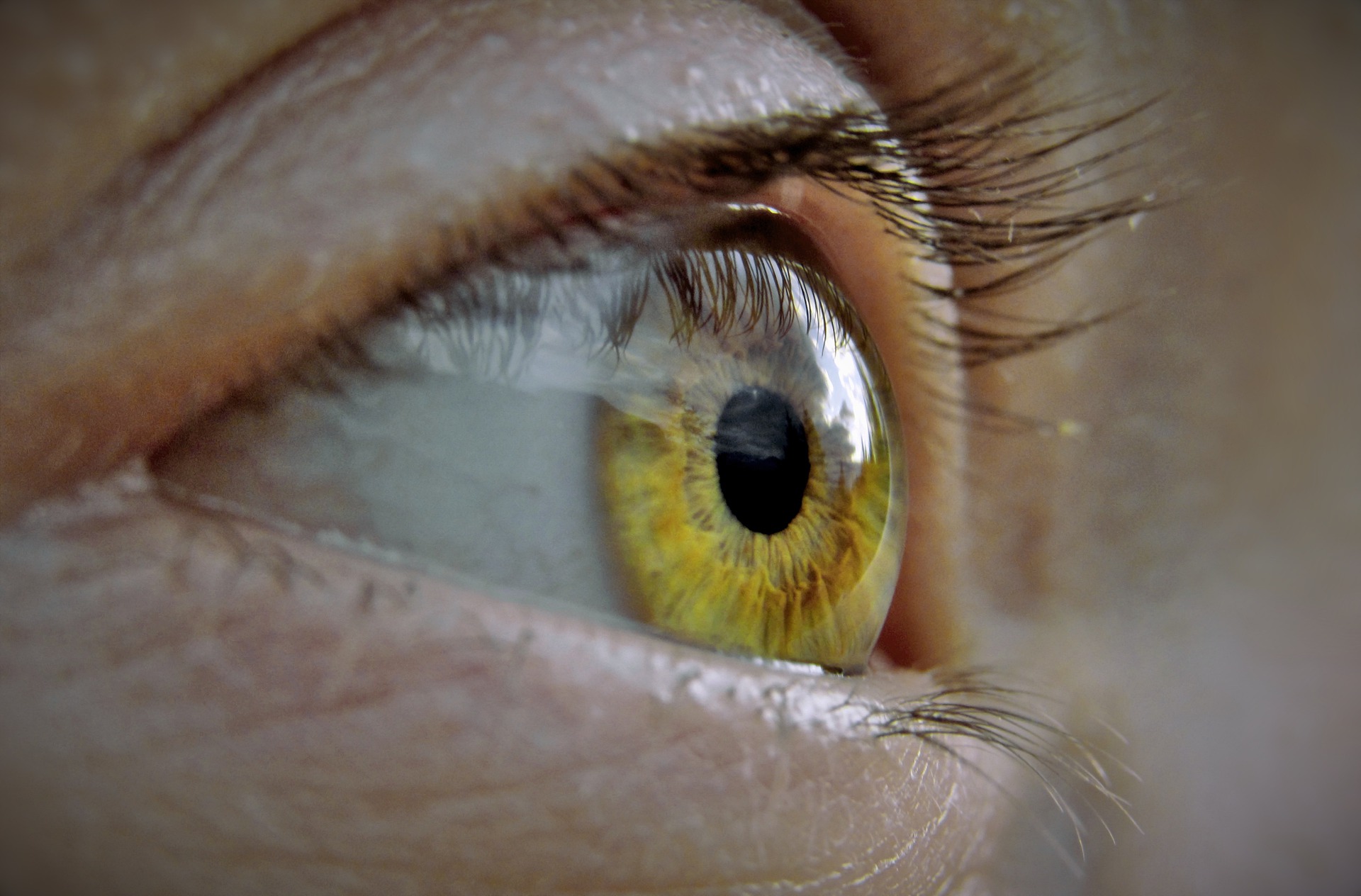Herpes simplex virus type 1 (HSV-1) is a neurotropic, double-stranded DNA virus that can cause a wide variety of infections, including many eye diseases.
HSV-1 infects 66% of the global population, particularly 65% of Americans and over 50% of Europeans. Interestingly, the seroprevalence of HSV-1 in developing countries is declining, although it still exceeds 90% in countries such as Latin America and sub-Saharan Africa.
HSV-1 makes first contact with the eye at the level of the corneal epithelium: once it enters the host cell, it can trigger a lytic infection, releasing a multitude of virions capable of infecting neighbouring cells. The virus therefore travels, to the trigeminal ganglion via the afferent neuronal cells and here it establishes a latent infection. This is an episomal latent infection: instead of integrating its genome into the host DNA like retroviruses, HSV-1 remains latent in the nucleus of the host cell, where it can persist for a lifetime. In many cases, latent HSV-1 can reactivate and return to the site of initial infection. Reactivation episodes worsen herpetic eye disease and increase the chances of developing serious conditionsincluding significant vision loss or, in extreme cases, blindness.
Herpes Simplex type 1 eye infections can progress into a wide range of diseases, including blepharitis, conjunctivitis, uveitis, retinitis and keratitis. Most often infections occur unilaterally, but immunocompromised patients have an increased risk of developing bilateral infection. The most common ocular diseases caused by HSV-1 involve the outermost layers of the eye's surface and account for 50% of disease manifestations. The most serious manifestation of ocular herpetic infections is stromal keratitis: patients with this condition experience recurrent episodes of reactivation and each recurrence further damages the cornea.

Challenges and advances in the control of ocular herpes
Ocular herpes is a lifelong infection and finding a treatment for HSV has always been a challenge for doctors and scientists, also considering the absence of a vaccine for this infection.
Acyclovir and other nucleoside analogues
The drugs approved for the treatment of ocular herpes are mainly nucleoside analogues, which have shown many positive effects on the patient.
To date, acyclovir, a purine nucleoside analogue that inhibits HSV-1 replication, is the main treatment and can be administered to patients topically, orally or intravenously. Several studies report that acyclovir also has beneficial effects when administered as prophylactic therapy to prevent recurrent infections.
Drug resistance may occur in immunocompromised patients. However, topical administration has been shown to reduce the occurrence of resistance and also mitigate the drug effects associated with long-term use.
New technologies and emerging therapies
Nucleoside analogues are the only major class of drugs currently approved for the treatment of Herpes Simplex type 1 eye infections. However, given the challenges due to the emergence of drug resistance, new treatment options are being investigated.
One promising agent is BX795, a known PDK1 inhibitor. BX795 inhibits the phosphorylation of Akt at Ser473 and prevents the downstream flow of hyperphosphorylation of eukaryotic translation initiation factor-binding protein 1 (4E-BP1). Stimulation of Akt signalling at virus entry and subsequent activation of the mTORC1 complex has been shown to increase viral protein synthesis, so inhibition of this pathway is an effective way to prevent viral activities within the cell.
Aptamers, small oligonucleotides capable of binding to a wide variety of molecular targets, are also being studied. Recently, two RNA aptamers (aptamer-1 and aptamer-5) have been identified that can bind with very high specificity to the HSV-1 gD protein, inhibiting its interaction with its receptor HVEM. Aptamers do not induce toxicity, so they could prove to be a promising treatment option.
Cationic peptide therapies are another strategy that has shown the ability to inhibit HSV-1 eye infection in in vivo models.
The effectiveness of emerging treatments, however, has not been proven for latent infections. This unmet need could be fulfilled through the use of the CRISPR/Cas9 technique. This is a technology derived from the adaptive immune systems of bacteria: in these microorganisms, the CRISPR/Cas system uses RNA peptides to degrade the genetic material of phages and other viruses. Current systems are able to significantly reduce HSV-1 replication both in infected cells and in cells in which HSV-1 is quiescent. Future in vitro and in vivo studies will be needed to optimise treatment and examine the effects of CRISPR/Cas9 on HSV-1 infections.
Another good treatment option is OGT 2115, an inhibitor of heparanase enzyme activity (endo-β-d-glucuronidase,HPSE), which does not exert its effects by inhibiting viral replication, but acts by hindering the elimination of the virus from cells through the inhibition of HPSE (a protein important for the release of HSV-1 from infected cells).
Since current antiviral therapies can lead to drug resistance especially in patients whose immune system is compromised, recent studies show that the use of antibodies as antiviral agents could be an effective alternative to traditional therapies in this patient population.
The new treatment options show wide margins for success and growth. Further studies are needed to turn these new antiviral agents into real treatment options to prevent or treat HSV-1 eye infections.
Bibliography:
Dr. Carmelo Chines
Direttore responsabile
